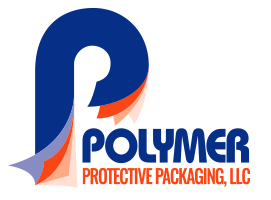What is Spunbond, and How to Know If It's the Right Packaging Option for You
In the world of packaging materials, there are numerous options available to businesses looking to protect their products and enhance their brand image. One such option that has gained significant popularity in recent years is spunbond. Spunbond is a versatile nonwoven fabric that offers several advantages over traditional packaging materials, making it an excellent choice for various applications, particularly in achieving Class A surfaces. In this article, we will delve into what spunbond is, its unique characteristics, and how to determine if it's the right packaging option for your needs.
Understanding Spunbond
Spunbond is a type of nonwoven fabric that is produced through a process called spunbonding. This process involves extruding continuous filaments of thermoplastic material, such as polypropylene, polyethylene, or polyester, and then bonding these filaments together to form a web-like structure. This nonwoven fabric is renowned for its durability, breathability, and cost-effectiveness.
Advantages of Spunbond Packaging
- Breathability: One of the standout features of spunbond is its excellent breathability. This property is crucial in various industries, especially when packaging products that may be sensitive to moisture or require ventilation. Unlike some other packaging materials, spunbond allows air to circulate, preventing the buildup of moisture and preserving the quality of the packaged items.
- Strength and Durability: Spunbond is known for its strength and durability, making it an ideal choice for protecting fragile or valuable items. It can withstand rough handling during shipping and storage without tearing or puncturing, ensuring that your products reach their destination intact.
- Lightweight: Spunbond is a lightweight material, which can help reduce shipping costs and environmental impact. Its low weight does not compromise its protective capabilities, making it an efficient choice for both manufacturers and consumers.
Examples of common products that are packaged in Spunbond
- Automotive Interiors: Spunbond materials are perfect for achieving the Class A surfaces required in the automotive industry. They can be used in car interiors, such as door panels, headliners, and trunk linings, to provide a sleek, flawless appearance.
- Electronics Packaging: Delicate electronic components and devices require protection during shipping and storage. Spunbond packaging can safeguard these items from damage while maintaining a professional, high-quality appearance.
- Medical Supplies: Medical equipment and supplies demand sterile, breathable packaging. Spunbond can provide the necessary protection while ensuring the products remain in pristine condition until use.
- Textiles and Garments: Spunbond materials can be used as garment bags or protective covers for textiles. They allow air circulation while safeguarding fabrics from dust and damage.
- Furniture and Home Goods: When shipping or storing furniture and home goods, spunbond materials can protect surfaces from scratches and abrasions while maintaining a polished look.
The world of packaging materials, finding the right fit for your specific needs is paramount. Spunbond, with its exceptional breathability, strength, cost-effectiveness, and customizability, offers a compelling choice for various packaging applications, particularly when aiming for Class A surfaces. Whether you're in the automotive industry or any field where surface quality and appearance matter, spunbond could be the solution you've been searching for.
If spunbond sounds like a good fit for your packaging requirements, we invite you to explore our range of spunbond polypropylene and polyester materials on our website: https://www.polymerpkg.com/spunbond-polypropylene-polyester/. Discover how spunbond can elevate your packaging solutions and help you achieve the impeccable finish your products deserve.


